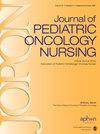Consensus Recommendations From the Children’s Oncology Group Nursing Discipline’s State of the Science Symposium: Symptom Assessment During Childhood Cancer Treatment
IF 1.9
3区 医学
Q2 NURSING
引用次数: 17
Abstract
Background: Recognizing and addressing illness-related distress has long been a priority for pediatric oncology nurses and the Children’s Oncology Group. Although symptoms are known to be highly prevalent during treatment for childhood cancer, there is currently no guidance for how often symptoms should be assessed, which symptoms should be prioritized for assessment, and how the data should be collected. Methods: The Nursing Discipline, within Children’s Oncology Group, hosted a one-day Interprofessional seminar titled “Symptom Assessment During Childhood Cancer Treatment: State of the Science Symposium.” Following the symposium, an expert panel was assembled to review all available evidence, including information presented and collected during the symposium. Consensus-building discussions were held to identify common themes and to produce recommendations for clinical practice. Results: Four recommendations emerged including (1) the identification of priority “core” symptoms for assessment; (2) inclusion of the child’s voice through self-report, when possible; (3) consistent documentation and communication of symptom assessment results; and (4) implementation of patient/family education related to symptoms. Discussion: Symptom recognition, through appropriate assessment, is the first step in symptom management. The goal for developing and sharing these recommendations is to promote consistent and comparable clinical practice across institutions in regard to symptom assessment during childhood cancer therapy. Integration of these recommendations will set the stage for future studies related to the frequency of symptoms across disease groups, projection of anticipated symptom trajectories, development of evidence-based teaching tools for common symptoms, and evaluation of patient outcomes with enhanced symptom assessment and management.来自儿童肿瘤组护理学科的科学状况研讨会的共识建议:儿童癌症治疗期间的症状评估
背景:认识和解决疾病相关的困扰一直是儿科肿瘤护士和儿童肿瘤组的优先事项。虽然已知症状在儿童癌症治疗期间非常普遍,但目前没有关于多久应该评估一次症状、哪些症状应该优先评估以及如何收集数据的指导。方法:护理学科,在儿童肿瘤组内,举办了为期一天的跨专业研讨会,题为“儿童癌症治疗期间的症状评估:科学状况研讨会”。研讨会结束后,成立了一个专家小组,审查所有现有证据,包括在研讨会期间提出和收集的信息。举行了建立共识的讨论,以确定共同主题并为临床实践提出建议。结果:提出了四项建议,包括(1)确定优先评估的“核心”症状;(2)在可能的情况下,通过自我报告纳入儿童的声音;(3)症状评估结果的一致记录和沟通;(4)实施与症状相关的患者/家庭教育。讨论:症状识别,通过适当的评估,是症状管理的第一步。制定和分享这些建议的目标是促进各机构在儿童癌症治疗期间症状评估方面的一致和可比较的临床实践。这些建议的整合将为未来的研究奠定基础,这些研究涉及疾病组间症状的频率、预测预期的症状轨迹、开发针对常见症状的循证教学工具,以及通过加强症状评估和管理来评估患者结果。
本文章由计算机程序翻译,如有差异,请以英文原文为准。
求助全文
约1分钟内获得全文
求助全文
来源期刊
CiteScore
3.10
自引率
0.00%
发文量
0
审稿时长
>12 weeks
期刊介绍:
SPECIAL PATIENTS NEED SPECIAL NURSES
Caring for children with cancer is one of the most technically and emotionally difficult areas in nursing. Not only are you dealing with children and adolescents who hurt, you must reassure and educate families, balance a multitude of other health care professionals, and keep up with ever-changing nursing practice and care. To help special nurses stay aware of the newest effective nursing practices, innovative therapeutic approaches, significant information trends, and most practical research in hematology and pediatric oncology nursing, you need the Journal of Pediatric Oncology Nursing.
The journal offers pediatric hematology, oncology, and immunology nurses in clinical practice and research, pediatric social workers, epidemiologists, clinical psychologists, child life specialists and nursing educators the latest peer-reviewed original research and definitive reviews on the whole spectrum of nursing care of childhood cancers, including leukemias, solid tumors and lymphomas, and hematologic disorders. JOPON covers the entire disease process--diagnosis, treatment, recovery, and survival, as well as end-of-life care.
Six times a year, the Journal of Pediatric Oncology Nursing introduces new and useful nursing care practice and research from around the world that saves you time and effort. Just some of the spirited topics covered include:
Cancer survivorship including later-life effects of childhood cancer, including fertility, cardiac insufficiency, and pulmonary fibrosis
Combination therapies
Hematologic and immunologic topics
Holistic, family-centered supportive care
Improvement of quality of life for children and adolescents with cancer
Management of side effects from surgery, chemotherapy, and radiation
Management of specific symptoms/diseases/co-infections
Medication tolerance differences in children and adolescents
Pain control
Palliative and end of life care issues
Pharmacologic agents for pediatrics/clinical trial results
Psychological support for the patient, siblings, and families
The dynamic articles cover a wide range of specific nursing concerns, including:
Advanced practice issues
Clinical issues
Clinical proficiency
Conducting qualitative and quantitative research
Developing a core curriculum for pediatric hematology/oncology nursing
Encouraging active patient participation
Ethical issues
Evaluating outcomes
Professional development
Stress management and handling your own emotions
Other important features include Guest Editorials from experts in the discipline, Point/Counterpoint debates, Roadmaps (personal insights into the nursing experience), and Proceedings and Abstracts from the annual Association for Pediatric Hematology/Oncology Nurses (APHON) conference.
Your special patients need special nurses--stay special by subscribing to the Journal of Pediatric Oncology Nursing today!
This journal is a member of the Committee on Publication Ethics (COPE).

 求助内容:
求助内容: 应助结果提醒方式:
应助结果提醒方式:


